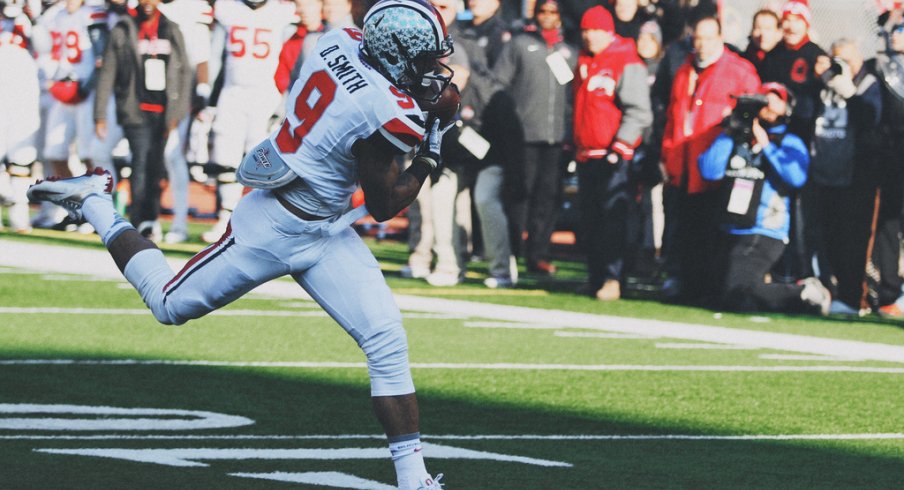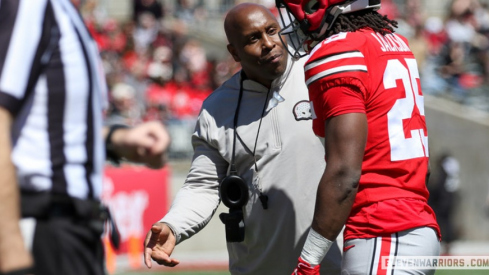With man-to-man pass defenses becoming nearly extinct across the college football landscape, passing game-plans have become focused on defeating the zone schemes that often define their opponents. After proving to be great zone-breakers, concepts such as stick and snag have become staples in nearly every playbook from the high school level to the NFL.
The Ohio State offense is no different. Although the Buckeyes seemed to shrink the playbook during the latter part of the 2013 season, throwing the ball with less frequency and success, they leaned towards these basic concepts to get the ball into the hands of their receivers.
However, those schemes are most effective at gaining short chunks of yardage by attacking the underneath zone after running off at least one deep defender with a vertical route:
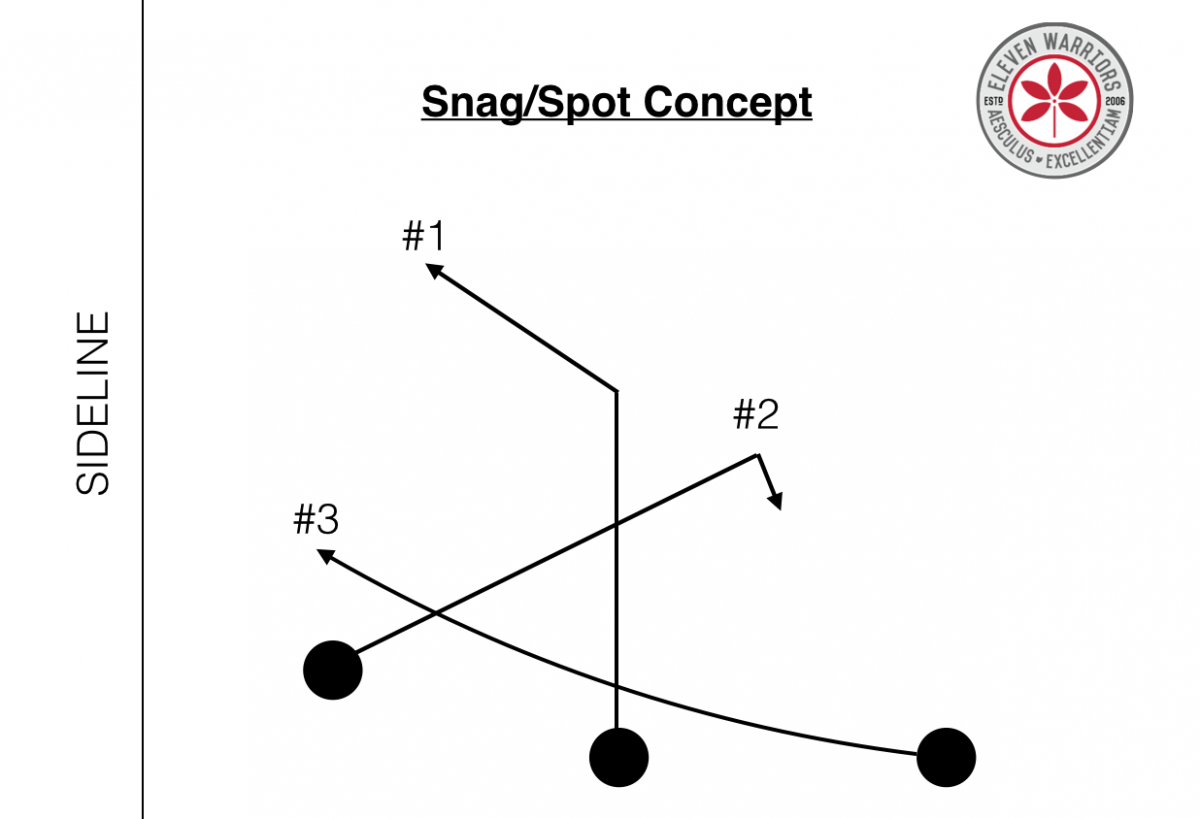
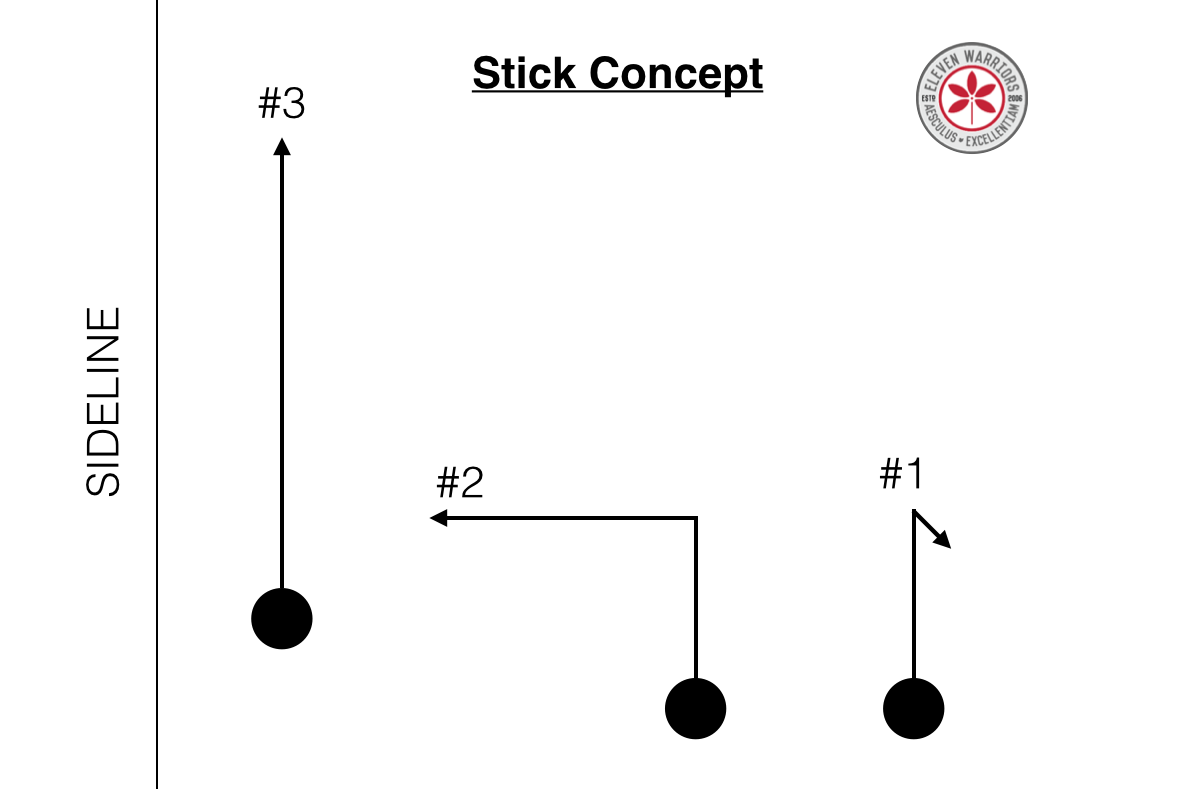
In both concepts, the offense is looking to create a triangle that essentially stretches the defense both vertically and horizontally. OSU has run these two plays from all sorts of personnel groups, targeting tight ends Jeff Heuerman and Nick Vannett in the passing game while still giving the threat of the inside run. Additionally, the Buckeyes found ways to get Carlos Hyde involved quite frequently, lining up two receivers to a side with Hyde coming out of the backfield as the underneath (#3) route in Snag.
While these concepts are great at picking up short, quick gains, an offense must still be able to throw the ball downfield when needed. In a perfect world, most teams would only like to throw downfield with the threat of a run, sucking in defenders with a fake handoff before throwing the ball over the heads of confused defenders. But since we live in a world that is certainly not perfect, an offense must find ways to throw downfield in medium to long yardage situations.
For Tom Herman and the Ohio State Buckeyes, a staple concept in these situations has become the "Sail" route combination:
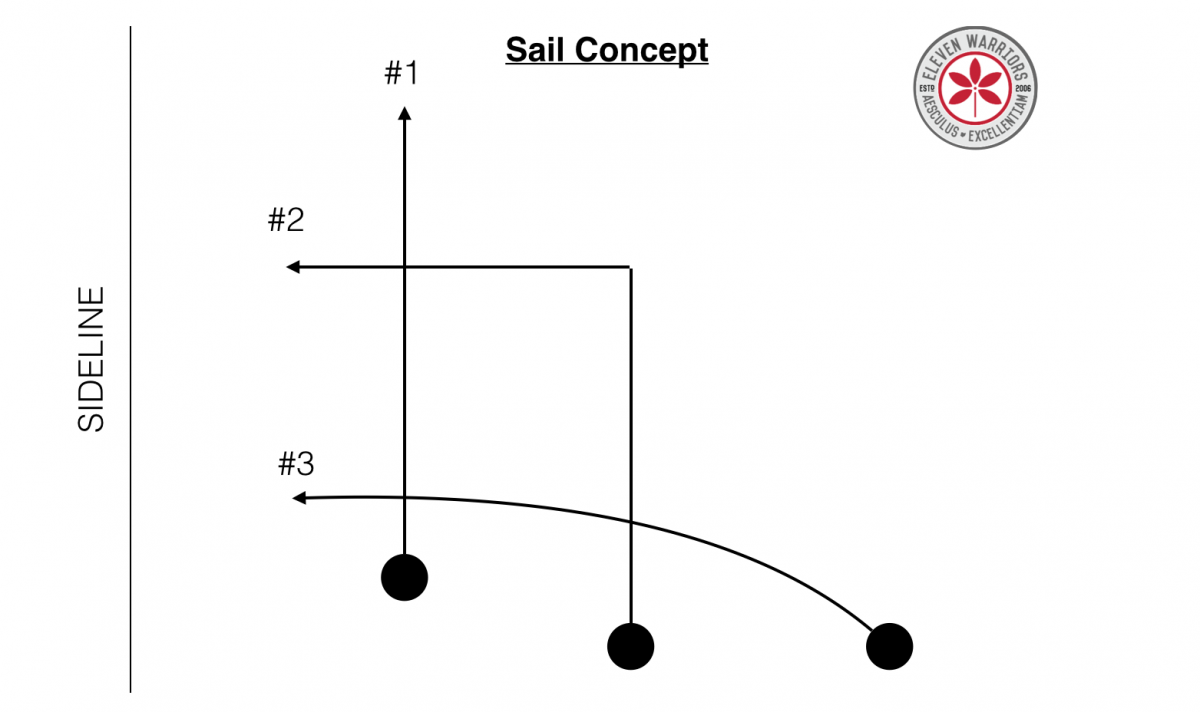
Routes:
- A deep vertical route straight upfield
- 12-14 yard speed out, meaning the receiver doesn't worry about slowing down to make a perfect 90 degree cut, instead maintaining their speed
- 3-5 yard flat or out route
The Sail concept is a simple idea that looks to overload one side of the defense with three receivers in the area defended by only two defenders. Unlike Snag or Stick above, the offense is simply looking to stretch a defense vertically, knowing that there are no zone defenses that have three levels of defenders.
Another advantage to Sail is that the quarterback's decision is determined by a simple deep-to-short read, starting with the deep vertical route and working back towards the line of scrimmage. With the time it takes to develop, Sail works well as a play-action pass, making it a great compliment in Offensive Coordinator Tom Herman's run-based offense.
Heading into last season's game in Ann Arbor, the Buckeyes looked to rebound from back-to-back subpar passing performances against Illinois and Indiana. In an attempt to set the tone early, the Buckeyes turned to Sail on their first play from scrimmage:
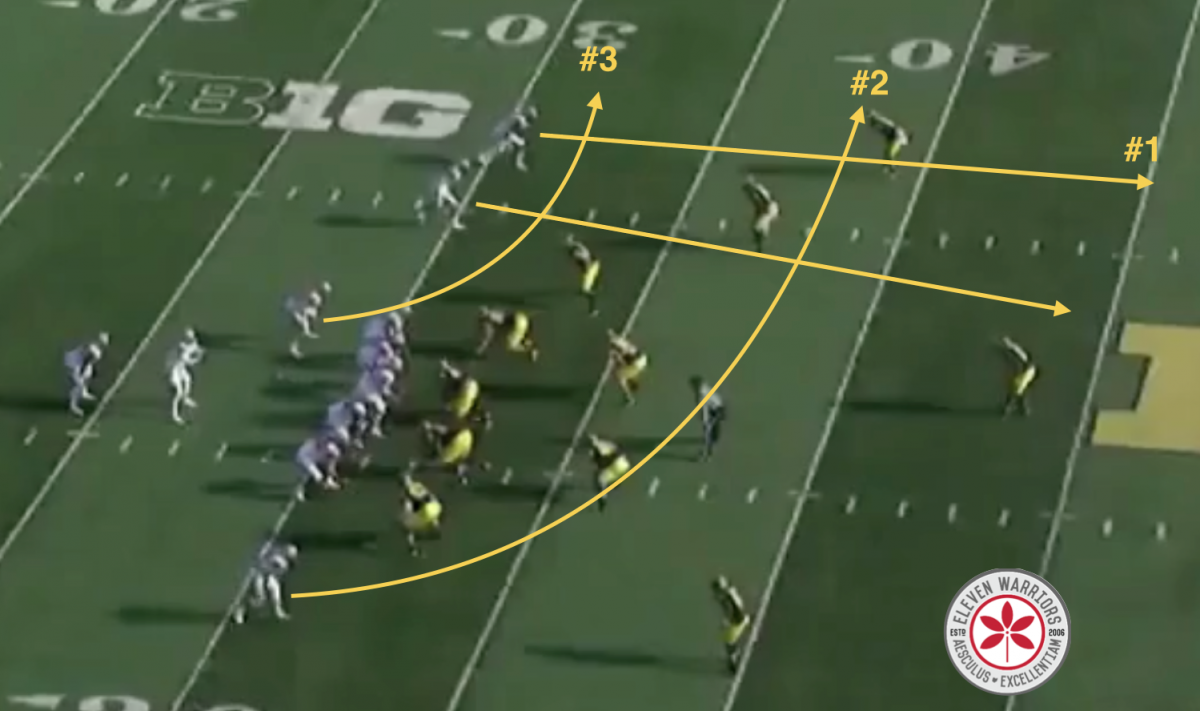
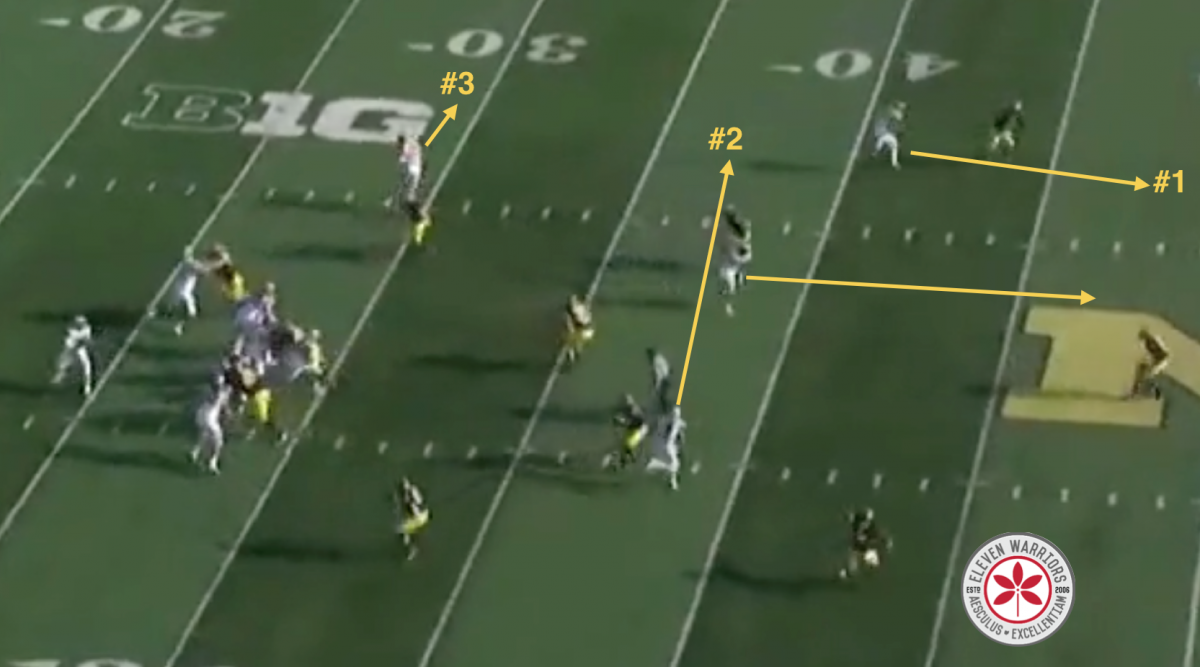
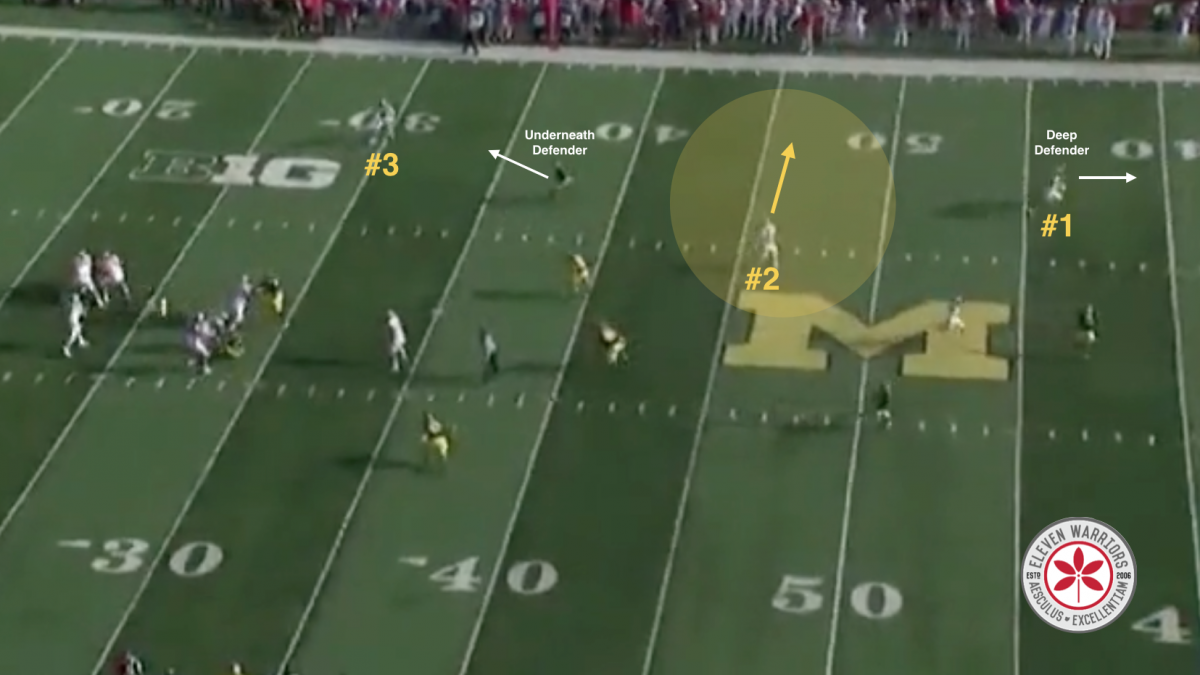
Although the Buckeyes sent two receivers deep on the play, the concept was still intact, as Devin Smith's close split and speed allowed him to come all the way across the formation, acting as the #2 receiver and occupying the space between the deep and underneath routes. A dropped ball prevented this from turning into a big gain, but the Buckeyes could smell the blood in the water
Just a short time later in the first quarter, Herman called for Sail from a completely different formation and personnel group:
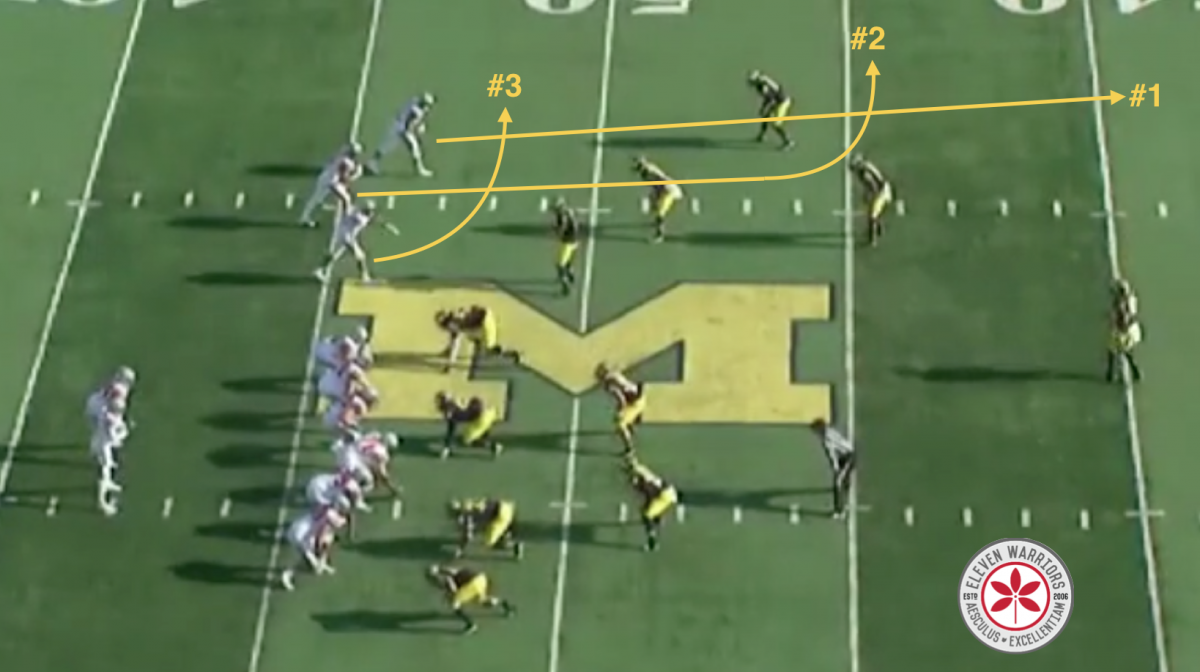
The Buckeyes lined up in a trips formation to one side, knowing the maize and blue would respond with a zone that would still cover the entire width of the field.
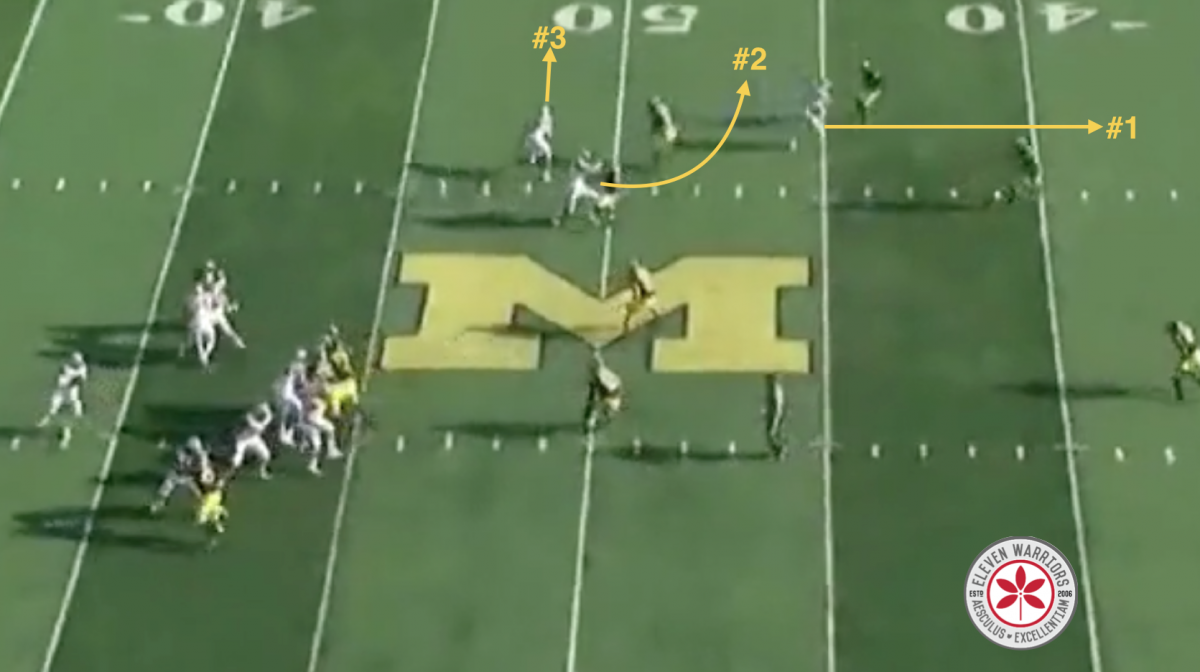
While the Wolverines did a good job of jamming the #2 route this time, the three deep safeties weren't ready for Devin Smith, who simply ran straight upfield between two of them.

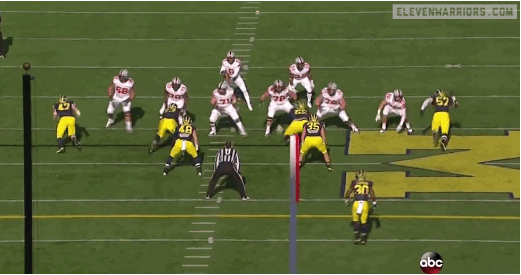
At a time when it appeared that Braxton Miller's confidence (and playbook) were shrinking last season, the Buckeyes turned to Sail on multiple occasions. While the play requires a QB with a strong arm, the simplicity of the read makes it a great addition to nearly any playbook.
